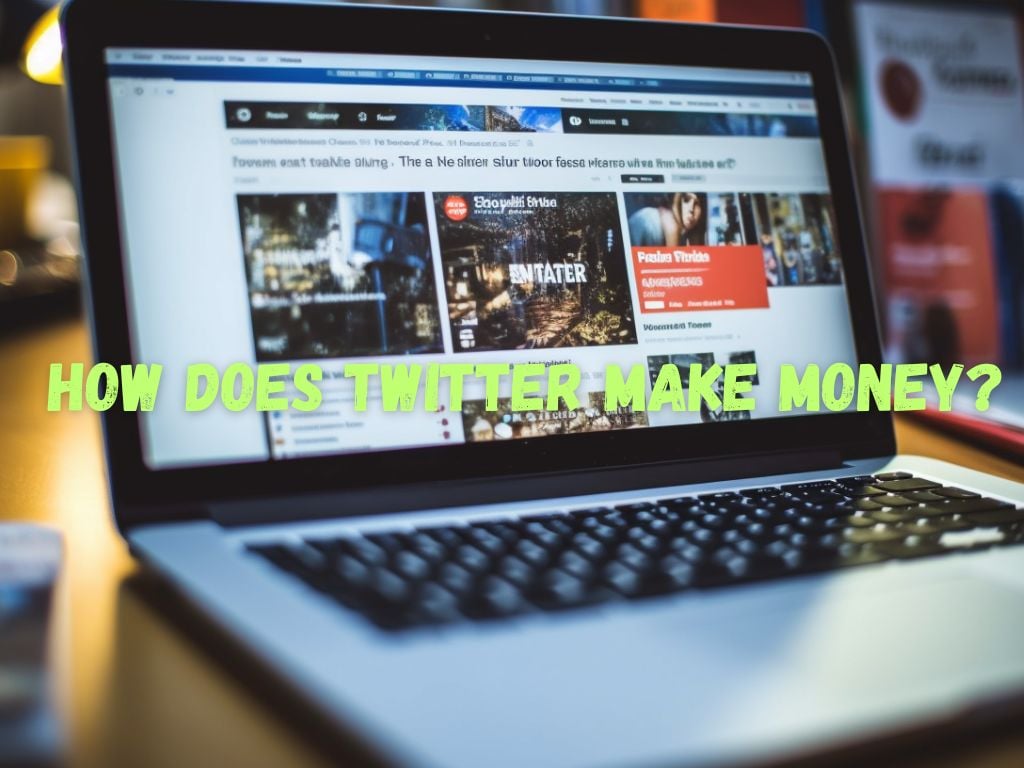Twitter, one of the top-rated social media platforms, has a user base that expanded past the 330 million mark at the end of 2020.
This soaring figure reveals the massive potential of Twitter as a powerhouse of communication, influence, and a goldmine of revenue generation.
But how does Twitter make money? How many revenue streams do they have?
In this article, we’ll run a comprehensive analysis of the revenue streams that power this globally recognized platform.
How Does Twitter Make Money? (An Overview)
Unlike Facebook and Instagram that banks on the sale of user data and targeted advertising, Twitter’s revenue streams can often leave users and marketers alike scratching their heads.
Twitter’s primary sources of revenue are advertising and data licensing, but recent years have seen the addition of subscription services into the mix.
Twitter’s Advertising Revenue
Generating more than 86% of its total revenue, Advertising undeniably forms the core of Twitter’s income model. The platform delivers three strategic modes of advertisements – Promoted Tweets, Promoted Accounts, and Promoted Trends.
Promoted Tweets appear in a user’s tweet feed just like regular posts. However, businesses and marketers pay to have these tweets dropped into the feed of their targeted demographics.
This way, even users who don’t follow the particular advertiser’s account leading to increased reach and engagement.
Promoted Accounts – Twitter’s unique feature – allows businesses to promote their profile. This feature suggests the promoted account to targeted users on their home page, search results, and ‘Who to Follow’ recommendations.
This strategy mostly aids in boosting the number of followers.
Meanwhile, Promoted Trends conveniently spotlights a brand or product. They appear at the top of the ‘Trending Topics’ list showing users what is being discussed most at a given time.
The promoted trends give a massive boost in brand exposure and can markedly shape online conversation around a product or service.

Twitter’s Data Licensing
Advertising might be its mainstay, but Twitter also profits significantly through data licensing.
Data licensing involves selling the voluminous data users generate on the platform. Twitter groups and categorizes this data into ‘data sets’, which are then sold to businesses and marketers.
This data enables advertisers to track consumer behavior, trends, and sentiments towards their services or products.
With such potent insights, businesses can better tailor effective marketing strategies, thus enhancing their operations and profitability.
Twitter’s Subscription Services
Twitter’s third revenue stream, which became operational in 2021, is its subscription-based service, Twitter Blue. This premium feature allows subscribers to enjoy perks such as an ‘Undo Tweet’ feature, reader mode, and others.
Although Twitter Blue is still in its early roll-out stages, its potential to contribute significantly to Twitter’s revenue portfolio cannot be overlooked.
Twitter’s Partnerships
Twitter further fuels its financial health through strategic partnerships with other companies. For instance, Twitter partnered with Google’s DoubleClick platform to improve advertising.
Through this partnership, advertisers can measure when an ad converts into a purchase or other desired consumer action.
Plus, Twitter has co-marketing partnerships with various prominent news and entertainment networks, adding another income stream to their portfolio.
The Role of Influencers on Twitter
Influencers play a significant role in the contemporary marketing landscape, and their impact transcends beyond their follower count on social media platforms.
In the context of Twitter, influencers have become an invaluable asset, contributing to the platform’s revenue streams directly and indirectly.
Direct Impact: Promoted Content Partnerships
One of the most important ways in which influencers contribute to Twitter’s revenue is through promoted content partnerships.
Brands collaborate with influencers to promote their products or services to the influencer’s audience.
This partnership entails sponsored tweets or paid endorsements containing relevant hashtags, links to the brand’s website, and sometimes affiliate marketing elements.
When influencers align their content with a particular brand, they leverage their credibility and trustworthiness among followers, leading to increased visibility and customer acquisition for the brand.
Influencer marketing on Twitter varies from large-scale partnerships with celebrities to micro-influencers who appeal to niche markets.
Promoted content partnerships with influencers often prove more productive for brands than standard promoted tweets, as they benefit from the influencer’s established trust and rapport with their audience.
Consequently, this translates into a higher return on investment for advertisers, encouraging them to continue advertising on Twitter.

Indirect Impact: Buzz-Worthy Content and Audience Engagement
The indirect influence of influencers on Twitter’s revenue is closely associated with their ability to create engaging content that resonates with their followers.
Influencers invest time and effort into developing authentic and captivating content which encourages high levels of audience interaction.
High-quality content created by influencers entices users to spend more time on the platform, subsequently increasing their likelihood of engaging with ads or sponsored content, contributing to Twitter’s advertising revenue.
In addition to publishing content, influencers contribute to the formation of virality on Twitter.
They spark conversations and debates on various topics, often creating trends or popularizing existing ones. As more users actively participate in discussions or share influencers’ posts, the hashtag or subject can go “viral.”
This virality increases the demand for Promoted Trends among advertisers aiming to ride the wave of trending topics and achieve maximum visibility.
The role of influencers on Twitter transcends numbers.
With their potent capability to create authentic content, engage with their followers, and promote real-time conversations, influencers not only attract direct revenue through content partnerships, but also indirectly encourage user engagement with ads or sponsored content.
Their influence on virality and audience engagement enhances Twitter’s overall profitability and, as a result, solidifies the platform’s credentials as a prime advertising choice for brands.
FAQs
What percentage of Twitter’s revenue comes from advertising?
Over 86% of Twitter’s revenue is derived from advertising.
How does data licensing work on Twitter?
Twitter sells categorized data to businesses and marketers, aiding them in tracking consumer behavior and trends, thus informing their marketing strategies.
What is Twitter Blue, and how does it contribute to Twitter’s revenue?
Twitter Blue is a subscription-based service that provides subscribers with additional features for a monthly fee, contributing to Twitter’s revenue growth.
How do partnerships help Twitter generate income?
Twitter engages in partnerships with other companies, such as Google’s DoubleClick and various news networks, to boost its advertisement efficacy and build co-marketing initiatives.
Conclusion
While Twitter may seem like a simple social media platform, the business model’s intricate details are what keep the platform thriving.
Whether it’s making money through advertising, data licensing, subscription services, or strategic partnerships, Twitter continues to leverage its vast user base to consistently boost its bottom line.


 Tags:
Tags:










